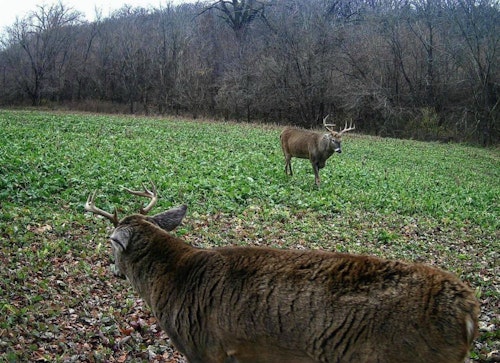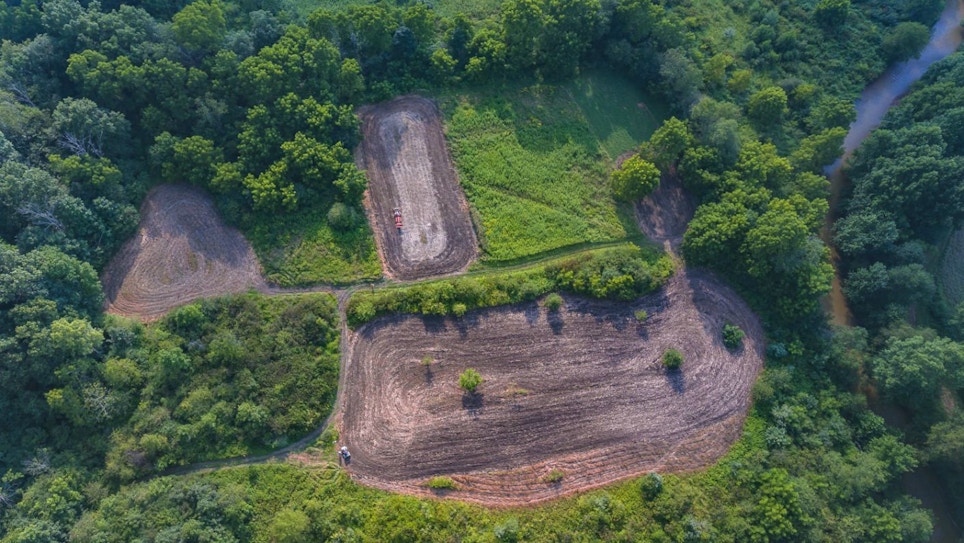Hunters getting pretty sophisticated about what they plant in their food plots these days. They’re also putting careful consideration into the size and shape of the plots.
Size definitely matters. Food plot guru Kip Adams says it’s important to determine the purpose of the plot before you start clearing ground.
“Is it going to be a forage plot that will provide the deer food during the spring and summer or even a fall and winter food plot, or will it be a hunting plot that you intend to put a tree stand over?” he asks. “Or do you want to have a food plot that serves as both? All of those questions are important in determining the size of a plot.”
It is possible to have a single plot that serves as a summer forage and a fall and winter hunting plot, but that’s not always a wise choice. Adams says you can do that with a larger field by breaking it up into several smaller plots. He recommends planting summer forage in the middle of the field and fall and winter forage near the edges, where deer are more likely to feed during hunting season.
“The problem with a single plot that you want to use as a forage plot and a hunting plot is that if you spook the deer during hunting season, then they will be much less likely to use it during the daylight hours as the season progresses,” he says. “Instead, I prefer a larger field that can be used as a feeding plot either in the summer or in the fall and winter, and a smaller hunting plot away from the larger field. Ideally, I want the actual hunting plot to be on the path from the deer’s bedding area to the larger feeding plot. They will stop for a few minutes in the smaller plot back in the woods, offering a perfect hunting opportunity.”
The Perfect Size
Adams says forage or feeding plots should be considerably larger than hunting plots, especially if you have a high deer density or you want to plant, say, beans, cow peas or corn — foods that whitetails hit hard as the plants become palatable. Smaller plots will get picked clean in a few weeks, and then the local deer will look for food somewhere else. In most situations, Adams likes summer plots that are anywhere from one-half acre up to five acres.
For hunting plots, he prefers much smaller openings, anywhere from one-eighth acre up to three-quarters of an acre. Not only will that small size keep the deer in front of your tree stand and offer an easier shot with a bow or gun, but it will allow them to pass through without lingering. That’s important, because a whitetail you can’t or don’t want to shoot will spook as you climb down from your tree at the end of the day, and that can burn that spot for the rest of the season.
“I want deer in hunting plots to stick around just long enough to offer a shot if I want to take it,” says Adams. “Otherwise, I want that deer gone so the next ones behind it will come out. If the plot is too large, the deer might stay in it all evening and you’ll spook them when you climb out of your stand. I want to avoid making deer uncomfortable or afraid of using a forage plot, so I try to stay as far away from it as I can.”
Shape It Right
In some case, the shape of plots can be more important than their size, especially if a plot is designed to be a hunting plot. Adams says hunters who have the ability to start a food plot from scratch should make it as irregularly shaped as possible.
How uneven it is might depend on the land itself, or it might hinge on the type of equipment used to plant and maintain that plot. An old tractor might be hard to maneuver around corners and uneven edges, but Adams says it’s wise to give the plot as many edges as possible.
“Deer like the security of edges. I often recommend making a hunting plot the shape of a boomerang, which gives the deer the freedom to escape quickly in any direction. Also, deer like to move as they feed, so they will often pass by the mid-point of the plot, which is a good place to hang a tree stand,” he notes.
He also suggests planting shrubs and soft-mast trees around the edge. That will give deer more food choices and the added security they need, especially as the season progresses. In many cases, bucks will stop short of a field to watch for danger, especially if they’ve been spooked from that field before. If a buck doesn’t have some sort of cover close to the plot, he’s more likely to stop far back in the woods. A soft edge of shrubs and other head-high cover can pull bucks right up to the edge. They’ll stop for a few minutes before stepping out into the plot, often with plenty of shooting light left.
What if you don’t have the luxury of building a plot from scratch?
In many cases, hunters are limited by the landowner’s farming practices, and food-plot space is a precious commodity. If you have the ability to take a small piece of pasture land or hayfield and convert it into a deer food source, Adams suggested focusing your efforts on a corner or some other spot with at least two sides.
The more edge cover the deer have, the more secure they will feel. Bigger isn’t always better, so don’t be disappointed if the farmer or landowner offers you only a small chunk of his acreage. Do it right and that’s all you’ll ever need.







